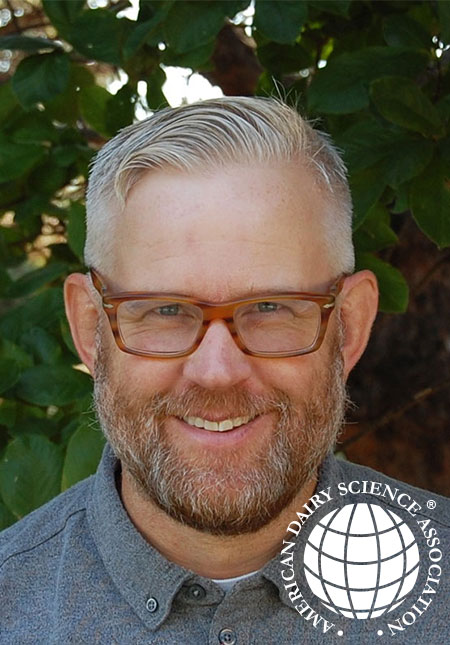
Name: Paul Kononoff
Institution: University of Nebraska
Current role with ADSA: Editor-in-chief, Journal of Dairy Science
LinkedIn: Paul Kononoff
Twitter: @rumen8er
- How long have you been involved with ADSA, and what compelled you to join the association?
In the summer of 1995, I had just graduated with my bachelor’s and my father was a practicing veterinarian in Saskatchewan and noticed an advertisement in the Journal of the American Veterinary Medical Association for ADSA’s annual meeting. The meeting was scheduled to be held at Cornell University and he suggested I attend and told me he was willing to help me with my expenses. I took him up on the idea and booked a ticket to Ithaca. I had just finished my undergraduate thesis and I remember how excited I was to see and even meet some of the people whose work I had read. I attended a symposium on effective fiber and still remember listening to the presentations of Rick Grant, Mike Allen, Dave Mertens, Lou Armentano, and Jeff Firkins. This symposium was well organized and the content was cutting edge—little did I know then what a major impact it would have on my own scientific pursuits in that area. It was at that meeting that I decided to become a dairy scientist and I realized that by becoming a member of ADSA I could be a part of the community of leading dairy scientists.
- What do you enjoy most about being a board member?
Perhaps the greatest honor of serving on the board is being a part of discussions aimed at helping the next generation of dairy scientists. The board fully understands the importance of these members and actively seek ways to provide them programming that will help them advance in their careers.
- Why is it important for the dairy science community to participate in the association?
I really think participation in ADSA means different things for different people. Aside from the valuable offerings that I will touch on later, for me participation, first and foremost, means interaction with others in the field. Over the years, I have met so many great scientists from around the world who are now not only valuable colleagues but also, in many cases, great friends. It used to be that we would mostly interact once a year at the annual meeting and sometimes over email but now with social media, many of these interactions occur throughout the year. These valuable relationships were almost all forged at the annual meeting but in different ways: meeting during the formal poster session or simply striking up conversation in an elevator. Science is at the root of all of these relationships, and ADSA serves as the conduit for scientists to connect.
- What do you think is the most important resource that ADSA provides the scientific community?
Well, as you can imagine, as editor-in-chief of JDS, I believe that the most valuable resources are Journal of Dairy Science and JDS Communications! I believe these publications not only contain innovative and cutting-edge content but they also serve as a major vehicle to stoke future innovation in the dairy sciences. In addition to these publications, ADSA provides valuable opportunities for interaction with other dairy scientists at events such as the annual meeting and Discover conferences.
- What strategic initiative of ADSA are you most passionate about and why?
I am probably most excited about the goal of “connecting the global dairy science community.” Over the years, I have been provided an opportunity to travel and it is so exciting to interact with dairy scientists around the world. For example, ADSA has a strategic partnership with dairy scientists in China that I have participated in. It is so exciting to be a part of the scientific discussions on topics related to worldwide dairy production. Additionally, meeting the many bright and passionate graduate students in these countries makes me realize the future of dairy science is in good hands. I really believe that ADSA plays a very important role because members are the hands and voice of dairy science and these know no borders. Most importantly, ADSA is not an exclusive club—it is open and supportive of all people who are willing to participate and contribute.
- What is one pressing challenge for the future of the dairy industry and how is ADSA addressing that through its new strategic plan?
I believe a major pressing challenge that faces the dairy industry is the poor perception of the industry and the foods that it produces. One component of the strategic plan is to unite the profession and the industry and by doing so it addresses this challenge. Through the annual meeting, Discover conferences, and the journals, ADSA provides settings in which rich perspectives and novel approaches abound. The journals publish year-round scientific information on how milk can be produced in a way that ensures both sustainability and proper animal well-being. They also shine powerful spotlights on the nutritional value of dairy products and the role of these products in feeding the world.